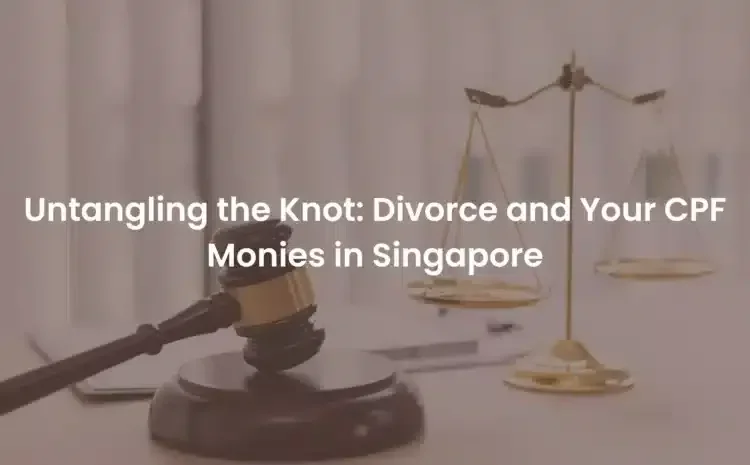Untangling the Knot: Divorce and Your CPF Monies in Singapore
Introduction
Divorce is a complex and emotional process, and in Singapore, the division of assets, including Central Provident Fund (CPF) monies, can be a significant point of contention. CPF is a crucial aspect of the country’s retirement savings system, and understanding how it’s handled during a divorce is essential. In this blog post, we will delve into the intricacies of divorce and your CPF monies in Singapore, offering insights, guidance, and practical considerations.
The Basics of CPF in Singapore
The CPF is a comprehensive social security system in Singapore that covers retirement, healthcare, and housing. Over the years, individuals contribute a portion of their income into their CPF accounts, which can be used for various purposes, including purchasing a home, medical expenses, and saving for retirement. CPF is a vital part of an individual’s financial security.
CPF and Divorce
When a marriage ends in divorce in Singapore, the division of assets often includes the CPF monies of both spouses. Here are the key points to consider:
Valuation of CPF Monies: The first step in the process is to ascertain the total value of the CPF monies held by each spouse at the time of the divorce. This valuation includes the Ordinary Account (OA) and Special Account (SA), which have different rules for withdrawal and utilization.
Ordinary Account (OA): The funds in the OA are often the focus during divorce proceedings, as they are commonly used for housing expenses, among other purposes. When it comes to the division of OA funds, it’s essential to establish the source of the contributions and whether they were made before or during the marriage.
Special Account (SA): The SA, primarily intended for retirement savings and investments, is generally not divided during a divorce. However, the court may consider its value when making decisions about other assets.
Property Matters: If a couple has used their CPF monies for the purchase of a property, the division may involve selling the property and distributing the proceeds accordingly. This can be a complex process that requires careful negotiation and legal guidance.
Court Orders: If the divorcing parties can’t reach an agreement on the division of CPF monies, the court may issue specific orders to distribute these assets fairly.
Important Legal Advice: Seeking legal counsel during a divorce is highly recommended, especially when dealing with complex financial assets like CPF monies. A lawyer can help ensure that your rights are protected and that the division is carried out equitably.
Conclusion
Divorce is a challenging and often emotionally charged process, and the division of assets, including CPF monies, c

